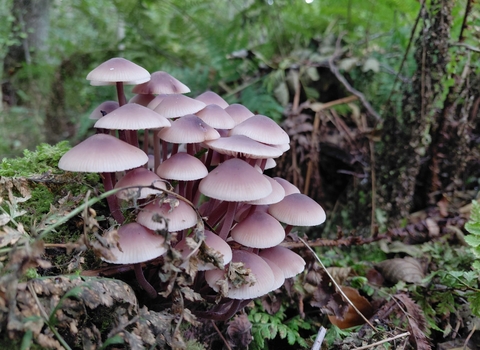Location
Know before you go
Dogs
When to visit
Opening times
Always openBest time to visit
SpringAbout the reserve
Charley Woods is at its best in the spring, when the woodland puts on a beautiful display of bluebellls. The reserve is worth visiting throughout the year though, as a diverse mixture of tree species, coupled with plenty of standing deadwood, bring in a variety of woodland insects and birds. Species include nuthatch, treecreeper and two native species of woodpecker (great spotted and green), as well as tawny owl, kestrel and jay.
The reserve is divided into three sections – two woodlands (Burrow Wood and Cat Hill Wood) and a field in between. All three areas are steeped in history and it’s worth putting aside a couple of hours to soak up the tranquil atmosphere. We are leading an innovative, long-term project on this reserve to let the field naturally regenerate into woodland – the perfect meeting of old and new.
Burrow Wood is an ancient woodland dating from the mid-1500s. It is dominated by pedunculate oak, with occasional ash and sycamore. The entrance to the wood, which is now very open, once contained mature elms, but only a few scattered elm suckers remain. The understorey is predominately rowan and holly, some of which rival the oaks in height and girth!
Cat Hill Wood is also known as the Wood of the Wild Cats and was first recorded in 1260. The field between the woods contains a ravine which may have been the gated entrance to the priory. Cat Hill Wood is also dominated by pedunculate oak with large numbers of non-native species including sweet chestnut, sycamore, larch and pines.
We manage these woodlands to give our native and ancient trees the best chance of thriving, in the long-term turning the whole reserve into native broadleaved woodland. We are allowing non-native trees to die out naturally. We also maintain the paths and monitor many species of woodland birds through a bird box scheme. You can help support the work we are doing on this reserve by becoming a member.





